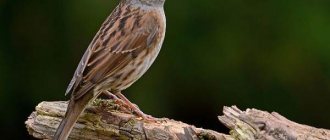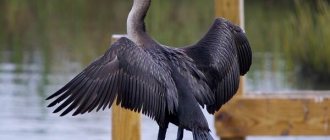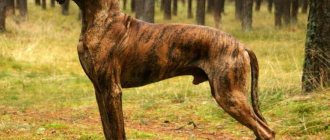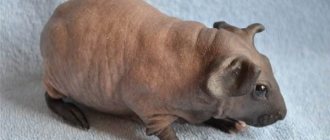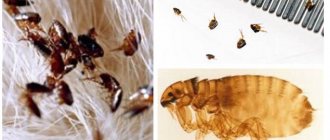Origin of the species and description
Photo: Tit
Tits are part of a fairly large family of tits. They are the largest representatives of the passerine order. The body length of a tit can reach fifteen centimeters. Previously, titmice were called “zinitsi”. The birds were so named because of the characteristic song of the animal, which sounds like “zin-zin.” Only a little later did the birds acquire their modern name, which comes from the characteristic shades of plumage. The name “tit” sounds almost the same among many peoples of Slavic origin.
These small, active birds have been highly valued at almost all times. Thus, there is a decree of King Louis of Bavaria, issued in the fourteenth century, which stipulates a strict ban on the destruction of tits. These birds were considered very useful; it was impossible to hunt them. The decree has survived to this day.
Today, the genus of tits includes four main species, which are divided into a large number of subspecies:
- gray tit. Its main external difference is the unusual color of its belly - gray or white. The natural habitat of this bird is the entire territory of Asia;
- highway This is the largest bird of the genus. Such birds have a very bright, cheerful color: yellow belly, black “tie”, bluish-gray or green plumage. Bolshaki are very common. They are found throughout Eurasia;
- greenback. Such birds are distinguished by their olive-colored tail, wings, and dull belly plumage;
- eastern In appearance, the animal looks the same as a gray tit. It has a gray belly, but lives in Sakhalin, Japan, and many countries of the Far East. Found in large numbers on the Kuril Islands.
Types of tits
According to data provided by the International Union of Ornithologists, the genus Parus includes four species:
- The gray tit (Parus cinereus) is a species that includes several subspecies, which some time ago belonged to the species Great tit (Parus major);
- Bolshak , or Great Tit (Parus major) is the largest and most numerous species;
- Eastern , or Japanese tit (Parus minor) is a species represented by several subspecies that are not distinguished by mixing or frequent hybridization;
- Green-backed tit (Parus monticolus).
Until recently, the species Eastern or Japanese tit was classified as a subspecies of the great tit, but thanks to the efforts of Russian researchers, it was possible to establish that these two species simply coexist quite successfully.
Return to content
Appearance and features
Photo: Tit bird
A lively, relatively small bird that is easily recognizable. Most birds of this genus have a bright lemon belly, in the middle of which there is a longitudinal black stripe. Some species have gray and white belly plumage. The head has black plumage, white cheeks, olive back and wings. Tits are slightly larger than average sparrows. And the main difference from sparrows is their long tail. The body is about twenty centimeters long, the tail can reach seven centimeters. The weight of the bird is usually about sixteen grams.
Video: Tit
Birds of this species have large heads, but small round eyes. The iris of the eyes is usually dark in color. Only in certain varieties is it whitish or reddish. The head of the birds is decorated with a bright “cap”. Some species have a small crest. It is formed from elongated feathers that grow from the crown of the head.
Despite their relatively small size compared to other birds, tits are real “orderlies” of the forest. They destroy a huge number of harmful insects.
The beak is rounded on top and flattened on the sides. Externally, the beak looks like a cone. The nostrils are covered with feathers. They are bristly, almost invisible. The throat and part of the chest are painted black. However, they have a pleasant slightly bluish tint. The back is most often olive. Such an unusual, bright color makes little tits very beautiful. They look especially colorful against the background of white snow.
Tits have small but quite strong legs. The claws on the fingers are curved. Such paws and claws help the animal to better stay on the branches. The tail consists of twelve tail feathers, the wings, rounded at the end, are short in length. These birds are distinguished by their pulsating flight. They flap their wings several times, then fly by inertia. In this way, animals save their energy.
Where does the tit live?
Photo: Tit animal
Tits can be found almost anywhere on our Earth.
The natural habitat includes the following regions and countries:
- Asia, Europe, Africa, America;
- Taiwan, Sunda, Philippine Islands;
- Ukraine, Poland, Moldova, Belarus, Russia.
Most of the tit population lives in Asia. About eleven species live in Russia and Ukraine. These birds cannot be found only in Central and South America, the Caribbean Islands, Madagascar, Antarctica, Australia, and New Guinea.
Representatives of this genus of birds prefer to live in open areas. They settle and build their nests near clearings, at the edge of the forest. They do not impose requirements on the type of forest. However, more often they can be found in mixed, deciduous forests. The habitat largely depends on the type of tit. Birds that inhabit Europe prefer to live in oak forests. Siberian tits are located closer to humans, somewhere on the outskirts of the taiga. In Mongolia, tits live in a semi-desert landscape.
These animals do not choose dark forests to build nests. They prefer to fly in forest-steppe zones, where there are reservoirs, rivers, and lakes not too far away. Also, representatives of the family can often be found in the mountains. Their largest population is in the Alps, in the Atlas Mountains. Animals do not rise above one thousand nine hundred and fifty meters above sea level.
Tits are non-migratory birds. This is due to their resistance to cold. They lead a nomadic lifestyle. When it gets cold, these animals simply move closer to people, because then they have a better chance of finding food.
What does a tit eat?
Photo: Tit in flight
Tits are insectivorous animals. Despite their relatively small size, these birds effectively clear forests, gardens, parks, and vegetable gardens from a huge number of harmful insects. However, the diet of such birds also depends on the season. In winter, titmice mostly have to eat plant foods.
There are no insects in winter, so birds have to roam closer to human habitation. In winter, their diet consists of sunflower seeds, oats, white bread, and livestock feed. The birds' favorite treat is lard. They eat it only raw. To get food, birds sometimes even have to visit garbage dumps.
During the spring, summer and autumn periods, the diet of these birds includes the following insects:
- dragonflies, cockroaches, bedbugs;
- cicadas, golden beetles, ground beetles;
- longhorned beetles, sawflies, weevils, chafer beetles, leaf beetles;
- wasps and bees;
- ants, cabbage moths, silkworms, flies, horse flies;
- pine needles, flowers, rosehip seeds, various berries.
Tits are considered to be exclusively insectivorous animals. However, this is not quite true. Some species of birds deftly hunt, catch and eat small bats. These mice are especially defenseless in the short period after hibernation.
A very interesting feature is the hunting of these birds for invertebrate insects that hide under the bark. Tits hang upside down on branches, which allows them to quickly reach their prey. In one day, a little titmouse can consume about six hundred insects. The total weight of prey per day can be equal to the tit’s own weight.
Features of character and lifestyle
Photo: Tit in Russia
Representatives of the tit family are very active animals. They are constantly on the move. They lead a social lifestyle, gathering in large flocks. One such flock can number about fifty individuals. Moreover, such flocks may also include birds of other species. For example, nuthatches. Birds split into pairs only during the mating season. At this time, the animals divide the feeding territory among themselves. About fifty meters are allocated for one couple.
Flying is not the titmouse's strong point. They are not hardy. However, this does not interfere with the life of the birds. In most cases, the animal's route consists of several trees and courtyards. The titmouse moves from one fence to another, from tree to tree. During the flight, the animal manages to profit by catching flying insects.
Tits are not migratory, but in most cases nomadic birds. With the onset of frost, they move closer to people's homes. However, sometimes migration is quite significant. Cases have been recorded when individuals ringed in Moscow were found in Europe. During daylight hours, tits look for food not only on trees and feeders. They often visit people's houses, flying onto balconies and loggias.
The character of titmouses is very cheerful, calm, and perky. They rarely get into trouble with other birds and animals. Tits are not embarrassed by the company of people. You can even feed them by hand. These animals can show aggression only during the period of feeding their offspring. They are quite angry and easily come into conflict with competitors, driving them out of their territory.
Features and habitat of the tit
Many people do not know whether the tit is a migratory bird or not . But this is a permanent inhabitant of our cities.
Only during periods of severe famine in the frosty winter do flocks move to places more favorable for survival.
As soon as the first rays of the sun appear, back in February, the tit bird is the first to begin to delight people with its twitter.
The song of the titmouse is similar to the ringing of bells. “Tsi-tsi-pi, in-chi-in-chi” – and the sonorous “pin-pin-chrrrrzh” informs city residents about the imminent arrival of spring.
They talk about the tit as the sunny messenger of spring. In a warmer period, the song becomes less intricate and monotonous: “Zin-zi-ver, zin-zin.”
Listen to the voice of the tit bird
This species is a constant companion of humans; the tit lives in forests and parks of large cities.
It is interesting to watch how a tit behaves in the sky . Her flight is the science of how to fly quickly and at the same time save energy, which simply inspires admiration for its professionalism.
A rare flap of its wings a couple of times - the bird soared into the sky, and then seemed to dive down, describing gentle parabolas in the air. It seems that such a flight cannot be controlled, and they also manage to maneuver in the undergrowth.
Social structure and reproduction
Photo: Tit Birds
The nesting period for tits falls in early spring. In most areas of the natural range, it is quite cold in early spring, so birds insulate their nests so that future chicks do not freeze in them. Tits build a nest in pairs, then together they raise their offspring. Animals build nests in sparse forests, gardens, and parks. A large number of nests are found on river banks. Birds place their home at a height of two meters from the ground. They often occupy houses abandoned by other bird species.
During the mating season, tits turn into aggressive creatures. They deftly drive strangers away from their territory, protecting the nest. Animals build a nest from various twigs, grass, moss, and roots. The inside of the house is lined with wool, cobwebs, and cotton wool. At one time, the female can lay up to fifteen eggs. They are white and a little shiny. The surface of the eggs is covered with small brown spots. The bird lays eggs twice a year.
The eggs mature within thirteen days. The female incubates the eggs. The male at this time obtains food for his mate. After hatching, the female does not immediately leave the chicks. During the first days, the chicks are covered with only a small amount of fluff. The mother is engaged in warming her young. At this time, the male begins to get food for the whole family.
Newly born tits are extremely voracious, just like adult birds. Parents have to feed them about forty times an hour.
Chicks become independent only seventeen days after birth. However, they do not immediately leave their parents. For about nine days, young titmice try to stay close. Ten months after birth, the young reach sexual maturity.
Reproduction and lifespan
The tit prefers to nest in sparse deciduous forests, along river banks, in parks and gardens. But you won’t find a tit’s nest in coniferous forests. The nest is placed by tits in the hollows of old trees or in niches of buildings. The bird will also build old nests abandoned by previous residents at a height of 2 to 6 m from the ground. Birds willingly settle in nests made by humans. During the mating season, the birds, so cheerful and restless, become aggressive towards their brothers.
To build a nest, thin grass stems and twigs, roots and moss are used. The entire nest is covered with wool, cotton wool, cobwebs, feathers and down, and in the middle of this heap a tray is squeezed out, which is covered with wool or horsehair. If the dimensions of the nest itself can be very different, depending on the nesting site, then the dimensions of the tray are approximately the same: depth - 4-5 cm; diameter - 4-6 cm. At the same time, in one clutch you can find up to 15 white, slightly shiny eggs. Reddish-brown spots and dots are scattered over the entire surface of the eggs, forming a rim on the blunt side of the egg. The tit lays eggs twice a year: once at the end of April or beginning of May, and the second time in mid-summer.
The female incubates the eggs for 13 days, and the male carefully feeds her during this time. For the first two or three days, the hatched chicks are covered with grayish down, so the female does not leave the nest, warming them with her warmth. At this time, the male feeds both the offspring and her. Then, when the chicks begin to become covered with feathers, the two of them feed their voracious offspring. After 16-17 days, the chicks are completely covered with feathers and are ready for independent life. But for another 6 to 9 days they stay close to their parents, who periodically feed them.
Young animals reach sexual maturity in about 9-10 months. The life of a tit in the forest is short, only 1-3 years, but in captivity a great tit can live up to 15 years. These birds are very useful in both gardening and forestry. After all, they destroy small insects under the bark of thin branches, in places where woodpeckers simply cannot reach. That is why it is so important to preserve this species in nature. Indeed, during winter frosts, when food is simply unavailable to birds, about 90% of tits die from hunger. A well-fed bird is not afraid of any frost. This is why it is so important to feed them in winter.
Tits are agile, fast birds. They do not often become victims of animals, birds and people. Catching a tit is not so easy. However, the titmouse is a tasty prey for many birds of prey. They are attacked by owls, eagle owls, barn owls, kites, eagles, and golden eagles. Woodpeckers can also be called an enemy. Woodpeckers are busy destroying nests. Squirrels, wryneck birds, and ants also damage and destroy nests.
Often tits die from fleas. Flea colonies may take up residence in the nest. Then young chicks may die from their exposure. Martens, ferrets and weasels actively hunt small birds. These animals deftly catch tits, despite their mobility. Most often this happens when the bird is collecting material to build its nest or is distracted by eating food. If the titmouse does not die from the paws of predators, then it can live in the forest for about three years.
In captivity, life expectancy can be more than ten years. As you can see, tits do not have many natural enemies. However, there are other factors that lead these birds to death. 90% of the time it's hunger. A very large number of birds die in the winter, when there is no way to get insects or plant food for nutrition. Frosts are not scary for tits if the bird is well-fed. For this reason, it is very important to make and fill animal feeders on time.
Natural enemies of tits
Photo: Tit in Moscow
Tits are agile, fast birds. They do not often become victims of animals, birds and people. Catching a tit is not so easy. However, the titmouse is a tasty prey for many birds of prey. They are attacked by owls, eagle owls, barn owls, kites, eagles, and golden eagles. Woodpeckers can also be called an enemy. Woodpeckers are busy destroying nests.
Squirrels, wryneck birds, and ants also damage and destroy nests. Often tits die from fleas. Flea colonies may take up residence in the nest. Then young chicks may die from their exposure. Martens, ferrets and weasels actively hunt small birds. These animals deftly catch tits, despite their mobility. Most often this happens when the bird is collecting material to build its nest or is distracted by eating food. If the titmouse does not die from the paws of predators, then it can live in the forest for about three years. In captivity, life expectancy can be more than ten years.
As you can see, tits do not have many natural enemies. However, there are other factors that lead these birds to death. 90% of the time it's hunger. A very large number of birds die in winter, when there is no way to get insects or plant food for nutrition. Frosts are not scary for tits if the bird is well-fed. For this reason, it is very important to make and fill animal feeders on time.
Tit food
In winter, the great tit is a common visitor to feeders. She happily eats cereals and plant seeds.
In the summer, it prefers to feed on insects and spiders, which it looks for on tree trunks or in the branches of bushes.
If you are patient, then in winter, after a very short period of time, the tit will learn to take food from your open palm.
The tufted tit is called the grenadier for the plumage on its head that resembles the headdress of grenadiers
Male whiskered tits have black plumage from their eyes, for which the bird got its name
Marsh Tit or Puffy Tit
Unlike some of its fellows, the great tit does not store food for the winter, but happily eats food stored by other species.
This species of tits feeds its chicks with the help of caterpillars, the body length of which does not exceed one centimeter.
Pictured is a tit feeder

